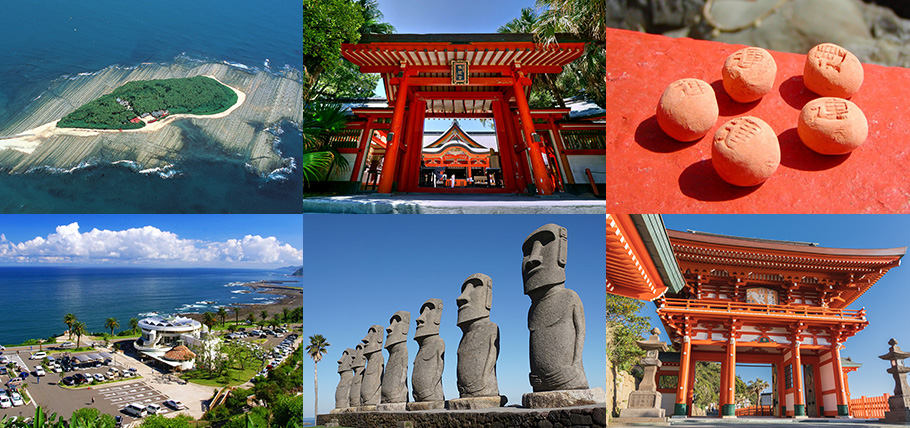Qingdao/Nichinan Plan Standard Course

This is a standard course that allows you to enjoy the most popular sightseeing spots in Miyazaki, "Aoshima Island," "Nichinan Coast," and "Sun Messe Nichinan" in their entirety.
Why not try the "luck ball throwing" at the mythical Udo Shrine to make a wish?
Minimum number of applicants: 2 (for visitors to Japan: 3)
departure time
| 1 | Departure 9:00 Return 16:00 (tentative) |
|---|
Course Content
| 9:00 | Miyazaki Station East Exit, Miyazaki Station Area Hotels |
| 9:30 | (1) Aoshima Shrine |
| 10:40 | (2)Roadside Station Phoenix |
| 11:20 | (3) Udo Shrine |
| 12:40 | (4)Aburatsu (Lunch: Bibinya scheduled) |
| 14:50 | (5)Sun Messe Nichinan |
| 16:00 | Miyazaki Station East Exit, Miyazaki Station Area Hotels |
There is also a plan to/from Sheraton Grande Ocean Resort. (Additional fee of 1,000 yen to be paid to the driver on the day of the tour.)
*Plan to/from Miyazaki Bougainvillea Airport (no extra charge) is also available.
*Meal in Aburatsu (scheduled to be at Bibinya) is included in the tour fee.
1,000 yen will be added for a meal at Obi Castle (location: Ito Residence).
*The admission fee of 1,000 yen for Sun Messe Nichinan is to be paid separately by the customer. Please pay it when entering on the day.
Tour Fees
one person10,800Yen (incl. tax)Highlights of this course
-
(1) Aoshima Shrine
Aoshima" is connected by a bridge from Aoshima Beach.
Although the shore side is a sandy beach, the island is surrounded by jagged rocks called "devil's washboard.
A small island with a circumference of 1.5 km, the island is overgrown with subtropical vegetation, giving it a slightly otherworldly atmosphere.
It is the setting of the mythical story of Umiyukihiko and Yamayukihiko.
It is said that if you visit here, your long life will come true, and it is also a god of marriage. -
(3) Udo Shrine
This unusual shrine, with its brightly colored vermilion-lacquered main shrine building, is located in a cave at the tip of Cape Udozaki, which juts out into the Pacific Ocean.
It is very popular for men to throw clay balls, which are "luck balls," with their left hand and women's right hand while making a wish. -
(4)Aburatsu (Lunch: Bibinya scheduled)
It has been a prosperous port town since ancient times. Especially in the early Showa period (1926-1989), the town prospered greatly due to what is known as the "tuna boom. Today, the town of Aburatsu still retains many vestiges of the bustle of the past, and visitors can enjoy strolling through the town while savoring its retro atmosphere. The Horikawa River, which was opened during the Edo period (1603-1868), and the stone bridges that spanned the river, are a wonderful sight, and valuable architectural structures can still be seen in the town.